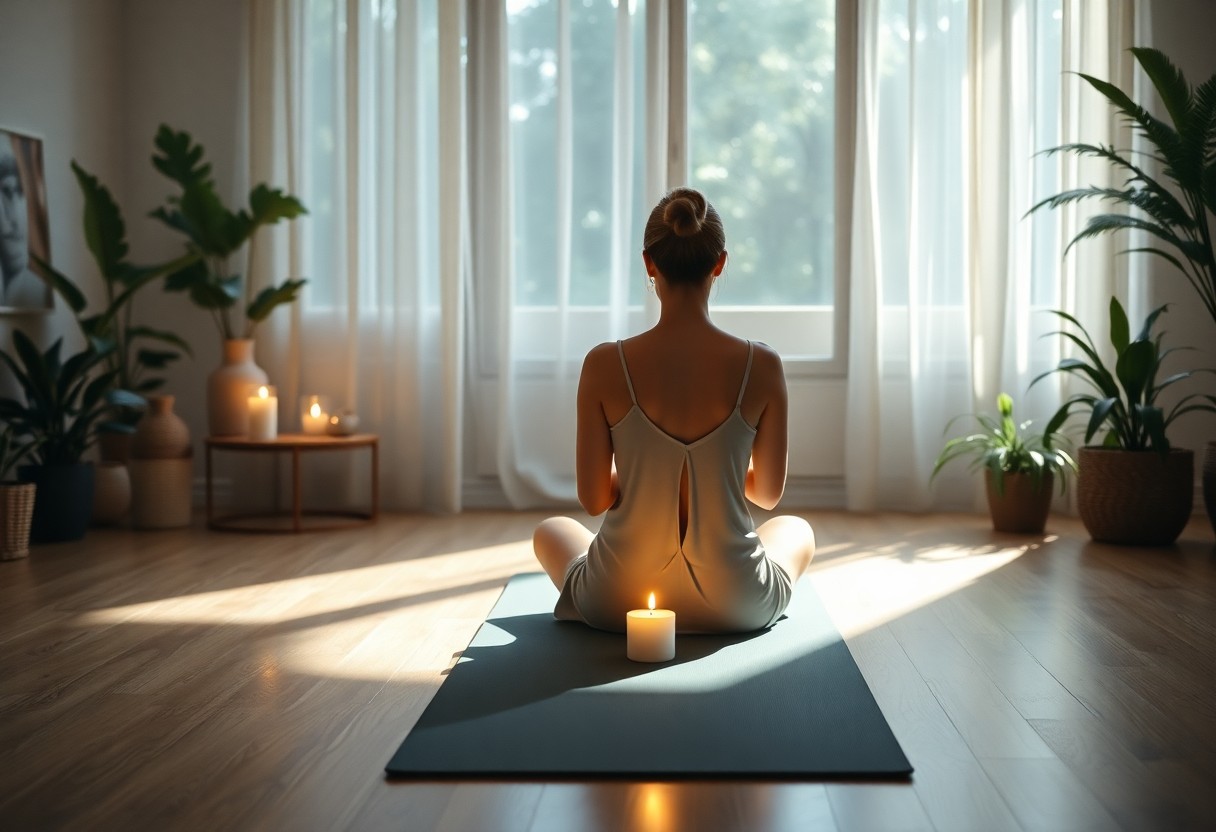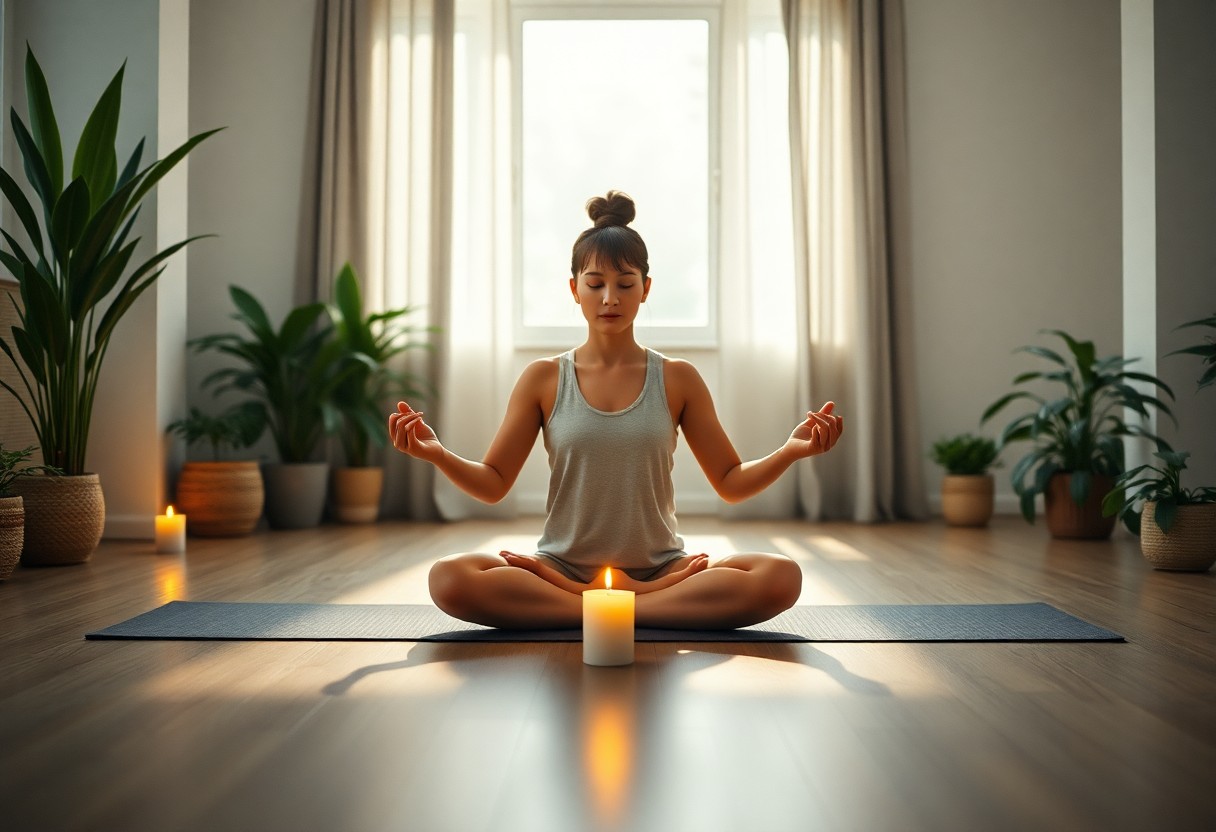Stress can often feel overwhelming, but you have the power to take a moment for yourself with simple meditation techniques. In this blog post, you will discover effective 5-minute meditation practices that can easily fit into your daily routine to help alleviate tension and restore your sense of calm. Whether you’re at your desk or in a quiet space, these techniques are designed to center your thoughts and release built-up stress. For a great starting point, check out this 5 Minute De-Stress Meditation - More Mindfulness, Less ....
Understanding Stress
To navigate daily challenges effectively, it’s crucial to understand stress. It's a natural reaction your body experiences when faced with pressure or demands, whether from work, relationships, or personal expectations. Identifying the sources of stress in your life can help you manage it better and enhance your overall well-being.
What is Stress?
Between feelings of anxiety and irritability, stress manifests in various ways. It’s a biological response designed to protect you in challenging situations but can become overwhelming when experienced chronically. Understanding this dual nature is the first step to maintaining a healthier balance.
Effects of Stress on the Body and Mind
Stress can have profound effects on both your physical and mental health. It can manifest through headaches, fatigue, sleep disturbances, and even digestive issues while also impacting your emotional state, leading to feelings of overwhelm and anxiety.
Due to the persistent nature of stress, your body may enter a continuous state of "fight or flight," which keeps your heart rate elevated and hormones such as cortisol in excess circulation. This can lead to more serious health issues over time. Additionally, your mental agility might decline as stress clouds your thinking, exacerbating feelings of frustration and helplessness. Taking proactive measures to manage stress is vital for maintaining both physical and emotional equilibrium.

The Benefits of Meditation
Even a few minutes of meditation can transform your day. It promotes relaxation, reduces anxiety, and enhances your overall sense of well-being. By engaging in Quick and Simple 5-Minute Meditation for Stress Relief, you can harness these benefits quickly, making meditation an effective tool in your stress management arsenal.
Mental Health Advantages
Mental clarity often improves with regular meditation practice. It allows you to step back from your thoughts, enabling you to observe them without judgment. As you cultivate this awareness, you may find that your resilience against stress increases, leading to a more balanced emotional state.
Physical Health Benefits
Above all, meditation can positively influence your physical health. By reducing stress and anxiety, it helps lower blood pressure, improves sleep quality, and enhances immune function. You may discover that just a few minutes of meditation can lead to substantial improvements in your overall health.
Benefits of meditation extend beyond mental clarity and emotional balance; they also encompass major physical advantages. Regular practice can help your body manage stress more effectively, decreasing the production of stress hormones. This reduction can lead to better heart health, lower inflammation levels, and a healthier weight, making you feel more energetic and robust in your daily life.
Quick Meditation Techniques
Your busy schedule doesn't have to prevent you from finding peace. Quick meditation techniques can easily fit into your day, helping you rejuvenate your mind and lower stress levels. In just five minutes, you can engage in meditation practices that bring clarity and calmness, enabling you to tackle your day with renewed energy. These techniques are designed to be simple yet effective, perfect for anyone looking to integrate more mindfulness into their life.
Breathing Exercises
Quick breathing exercises can transform your state of mind in just a few minutes. Focus on your breath by inhaling deeply through your nose, holding for a few seconds, then exhaling slowly through your mouth. This rhythmic pattern not only grounds you but also helps release tension and brings your mind to the present moment.
Body Scan Meditation
After a long day, a gentle Body Scan meditation can help you reconnect with your physical being. This technique encourages you to mentally scan your body from head to toe, tuning in to areas of tension or discomfort. By acknowledging these sensations without judgment, you can promote relaxation and enhance overall body awareness.
Meditation in the form of Body Scan focuses on mindfulness and body awareness. As you guide your attention through each part of your body, you can identify areas of tightness and discomfort, allowing your mind to rest and release tension. This practice helps cultivate a deeper connection with your physical self, improving your ability to manage stress and enhancing your overall well-being. Embrace this technique as a means to create a serene mind and a balanced body.

Guided Visualization
Despite the chaos surrounding you, guided visualization can anchor your mind and reduce stress. This technique encourages you to conjure vivid mental images that promote a sense of calm and tranquility. By immersing yourself in these serene scenarios, you create a mental escape that can effectively lower anxiety levels and help you reset your thoughts. With regular practice, guided visualization becomes a powerful tool in your stress relief arsenal, allowing you to navigate life's challenges with clarity and composure.
Creating a Safe Space
Visualization involves crafting a mental sanctuary where you feel secure and relaxed. Begin by finding a quiet place and taking a few deep breaths to center yourself. Picture a peaceful environment—perhaps a beach, forest, or cozy room—where you can fully immerse your senses in safety and warmth. Let this space be one where worries fade, making room for serenity and clarity. The better defined this sanctuary is in your mind, the more effective it will be in alleviating stress.
Imagery Techniques
Below are some effective imagery techniques that can enhance your guided visualization practice. Start with simple and relatable images that evoke a sense of peace. For example, picture a warm sun setting over a calm lake or visualize a gentle breeze rustling through trees. The key is to engage all of your senses—imagine the sounds, scents, and tactile sensations associated with your chosen imagery. As you build mental detail, you will deepen your relaxation experience.
And to deepen your imagery experience, consider incorporating specific elements that resonate with you personally. You might visualize walking through a flower garden, feeling the soft petals brush against your skin while inhaling their fresh fragrance. Alternatively, imagine the sound of waves gently lapping the shore, creating a rhythm that helps to calm your mind. By engaging all your senses, you make the visualization more vivid and impactful, ensuring that your stress relief is both effective and enjoyable.
Incorporating Mindfulness
After recognizing the benefits of meditation, you can deepen your practice by incorporating mindfulness into your daily routine. This involves being more present and aware of your thoughts, feelings, and surroundings as you go about your day. By actively engaging with the present moment, you can reduce stress and enhance your sense of well-being, allowing for a more balanced and fulfilling experience.
Mindful Observation
After you start practicing mindfulness, take a moment to engage in mindful observation. This technique encourages you to focus on your environment and the sensations around you. As you observe, let go of distractions and simply be present, noticing the details of what you see, hear, and feel without judgment. This practice can ground you and help you develop a deeper awareness of your surroundings.
Everyday Mindfulness Practices
Any opportunity you have during your daily activities can be transformed into a mindfulness practice. By intentionally bringing awareness to routine tasks—like washing dishes, taking a shower or walking—you can create moments of peace and clarity. Focus on your breaths, the textures, and the movements involved in each task, allowing your mind to settle and connect with the present.
Mindful observation is most effective when you apply it to your everyday tasks, turning mundane moments into opportunities for mindfulness. You might start by focusing on the sensation of water running over your hands while washing dishes, or paying attention to your breath as you walk. These simple practices can enhance your overall awareness and help cultivate a calmer mindset. With consistent effort, you will find that mindfulness becomes an integral part of your life, enhancing your stress relief practices.
Tips for Consistent Practice
All successful meditation practitioners emphasize the value of consistency. To establish a regular routine, consider these helpful tips:
- Set a specific time each day
- Start with short sessions
- Track your progress
- Incorporate meditation into an existing habit
- Be patient and gentle with yourself
The key to a fruitful meditation journey is regularity.
Setting Aside Time
Besides committing to a specific time for your meditation, try to prioritize this practice in your daily schedule. Carving out just five minutes in the morning or evening can make a significant difference. Treat this time as an important appointment, blocking it out just as you would for any other commitment.
Creating a Conducive Environment
About your meditation space, it's vital to create an area that minimizes distractions and promotes tranquility. Choose a spot in your home that feels peaceful and comfortable, maybe adding elements like cushions, candles, or calming scents to enhance the experience.
Understanding that your environment directly impacts your meditation practice, aim for a setting that resonates with peace. Ensure it's quiet and free from interruptions, which allows you to settle into a focused state. Consider using soft lighting or calming decor to foster a serene atmosphere. A conscious effort to curate this space will enhance your meditation sessions and encourage consistent practice.
Final Words
To wrap up, incorporating 5-minute meditation techniques into your daily routine can significantly enhance your ability to manage stress. By taking just a few moments for focused breathing or mindfulness, you can create a calm oasis amidst your busy life. Experiment with different techniques to find which resonates best with you, and make it a habit to check in with yourself regularly. This small investment of time can lead to improved mental clarity and emotional resilience, empowering you to navigate the challenges of your day with greater ease.
Q: What are the benefits of 5-minute meditation techniques for stress relief?
A: The benefits of 5-minute meditation techniques for stress relief include decreased levels of anxiety, enhanced mental clarity, improved mood, and the ability to focus better. These short meditative sessions can help reset your mind, lower cortisol levels, and create a sense of calm quickly, making them convenient for busy schedules.
Q: How can I incorporate 5-minute meditation into my daily routine?
A: To incorporate 5-minute meditation into your daily routine, choose specific times during the day when you can consistently practice, such as in the morning after waking up, during a lunch break, or before bedtime. You can use guided meditation apps, set a timer, or simply find a quiet space to pause and focus on your breath.
Q: What techniques can I use during a 5-minute meditation session?
A: Techniques to use in a 5-minute meditation session include deep breathing exercises, body scans, mindfulness of thoughts, or focusing on a specific mantra. You can also visualize a peaceful scene or engage in gratitude meditation by reflecting on things you are thankful for, allowing your mind to settle into a place of tranquility.
Q: Do I need any special tools or equipment for 5-minute meditation?
A: No special tools or equipment are needed for 5-minute meditation. All you require is a comfortable space and a few moments of undisturbed time. However, you may choose to use items like a meditation cushion, play calming background music, or utilize guided meditation apps for added support.
Q: Can beginners effectively practice 5-minute meditation for stress relief?
A: Yes, beginners can effectively practice 5-minute meditation for stress relief. Starting with just a few minutes each day allows newcomers to gradually adapt to the practice without feeling overwhelmed. With consistency, beginners will find it easier to settle into meditation and experience its stress-relieving benefits.













0 Comments